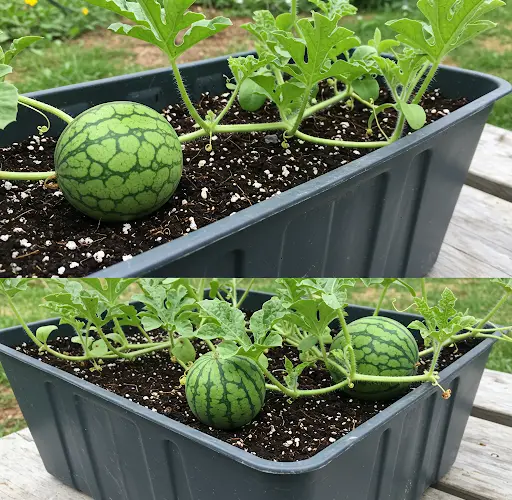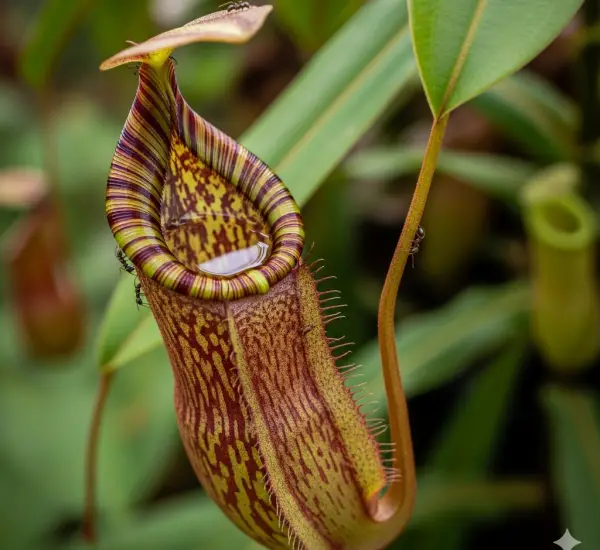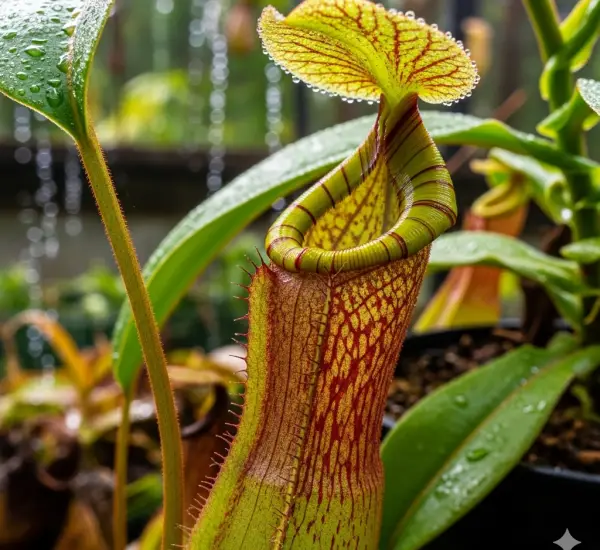If you’ve ever dreamed of growing a massive watermelon—sweet, juicy, and the size of a piglet—there’s a little-known technique that can help you get there. Watermelons are a summer favorite, but getting them to grow large and flavorful often takes more than just planting a seed and watering it regularly.
With the right soil, natural boosters, and smart planting practices, you can encourage explosive fruit growth that results in record-breaking size. In this article, you’ll learn a unique method for growing gigantic watermelons, all from natural and easily available materials.
1. Choosing the Right Variety
The journey to a giant watermelon starts with the seed. Not all watermelon types are created equal. For maximum size, choose a variety known for large fruit, such as:
-
Crimson Sweet
-
Carolina Cross
-
Black Diamond
-
Jubilee
These varieties have genetics that support heavy fruit, sometimes reaching up to 50–100 pounds under optimal care.
2. Soil Preparation Is Key
Watermelons are heavy feeders. If the soil isn’t rich and well-draining, the plant won’t thrive. A traditional but powerful method is to create a nutrient pit where the watermelon will be planted.
Dig a hole about 18 inches wide and 12 inches deep. Fill the bottom with:
-
Banana peels – for potassium, essential for fruit development
-
Crushed eggshells – for calcium to prevent blossom-end rot
-
Compost or well-rotted manure – to boost nitrogen and organic content
-
Ash – for phosphorus and to deter soil pests
Cover the pit with soil and let it settle for 7–10 days before planting.
3. Planting at the Right Time and Spacing
Watermelons love heat and sunlight. Plant your seeds or seedlings after the last frost, when the soil temperature reaches at least 70°F (21°C). Each plant needs plenty of room to stretch out—at least 4–6 feet of space in all directions.
If space is limited, watermelons can be trained along trellises with slings to support the fruit, but for monster melons, ground-level, horizontal growth works best.
4. Use a Natural Growth Booster: Rice Water + Molasses
A secret weapon used in this technique is a simple fermented rice water and molasses solution. Here’s how to make it:
-
Rinse uncooked rice and collect the cloudy water.
-
Add a tablespoon of unsulfured molasses.
-
Let it ferment in a covered jar at room temperature for 3–5 days.
Once it has a mild sour smell, dilute 1:10 with water and apply it to the base of the watermelon plant every 10 days. This acts as a natural probiotic and root enhancer, improving nutrient uptake.
5. Water Deeply, But Not Too Often
While watermelons love moisture, they hate waterlogged soil. The key is deep, infrequent watering—around once every 3–4 days during early growth, then slightly less during ripening.
Use mulch around the base to retain moisture, suppress weeds, and keep the soil temperature stable. Dried grass clippings, straw, or sugarcane mulch are great organic choices.
6. Remove Excess Fruit to Boost Size
Once the vines start flowering and forming fruit, choose only one or two melons per vine to grow to full size. Pinch off other fruits while they’re still small. This allows the plant to focus all its energy and nutrients on the selected watermelons, resulting in dramatically larger fruits.
This is one of the most important steps—quality over quantity is the rule here.
7. Sunlight and Heat Are Crucial
Position your watermelon patch in a spot that receives 8 to 10 hours of sunlight daily. More sun means more photosynthesis, which translates to better sugar production and faster fruit growth.
If you’re in a cooler climate, black plastic mulch can help warm the soil early in the season.
8. Support and Protect the Giant Fruit
As the watermelon grows, place a wooden board, tile, or thick cardboard beneath it. This prevents direct contact with the soil, reducing the risk of rot, pests, or uneven ripening.
Some traditional growers even place the growing melon on a cloth hammock to keep airflow underneath it.
9. Know When to Harvest
A watermelon that’s ready for harvest will:
-
Have a dull, matte skin (instead of shiny)
-
Show a yellow spot on the underside where it sat on the ground
-
Produce a hollow sound when tapped
-
Have a brown, dried tendril near the fruit’s stem
Don’t wait too long—overripe watermelons can crack or lose sweetness.
Final Thoughts
Using this method, one watermelon grew so large it was jokingly compared to a piglet in size! While it may take a little extra effort, the reward is worth it—giant, sweet watermelons grown with natural, effective techniques that draw on traditional gardening wisdom.
By combining nutrient-rich soil, careful pruning, and natural growth boosters, even home gardeners with moderate space can achieve extraordinary results. Try it for yourself this season and see just how big your watermelon can grow!



